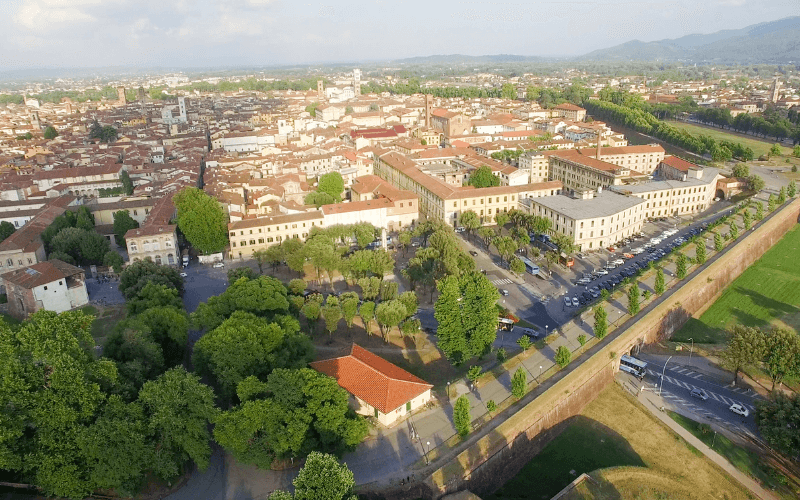Lucca, Italy, is a captivating city in the heart of Tuscany, renowned for its well-preserved mediaeval architecture, rich history, and enchanting atmosphere. This hidden Italian treasure attracts visitors from around the world, drawn by its unique charm, cobbled streets, and breathtaking landmarks. Lucca is home to many historical sites from the Roman and mediaeval eras, including the remains of a Roman amphitheatre – in a very unique way. Visit Lucca to explore its historical sites, and the charming architecture that defines this town.
Lucca offers an experience like no other, whether you’re a history enthusiast, a foodie, or simply looking for a picturesque getaway. Nestled between the Apennine Mountains and the Mediterranean coast, it also serves as a perfect base for exploring the stunning Tuscan region.
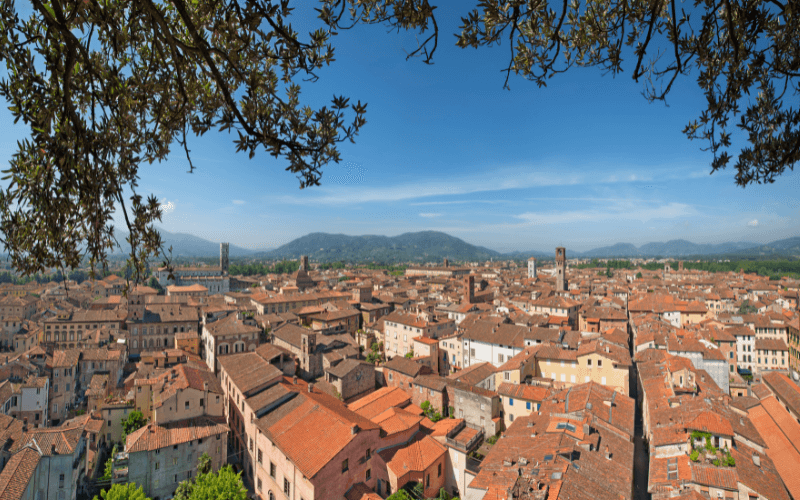
Lucca has a long and complex history, dating back to the Roman era. The city was an independent republic for almost 500 years, governed under a republican constitution. Lucca’s architecture is a stunning blend of Roman, Gothic, and Renaissance styles, with many historic buildings and landmarks.
The imposing 16th-century walls of Lucca are one of the few examples of city walls that have remained completely intact in Italy. The city walls, once of course of military importance, are today one of the city’s most beloved and impressive features, and provide a scenic route for leisurely walks or bike rides, offering panoramic views of this walled city’s beauty.
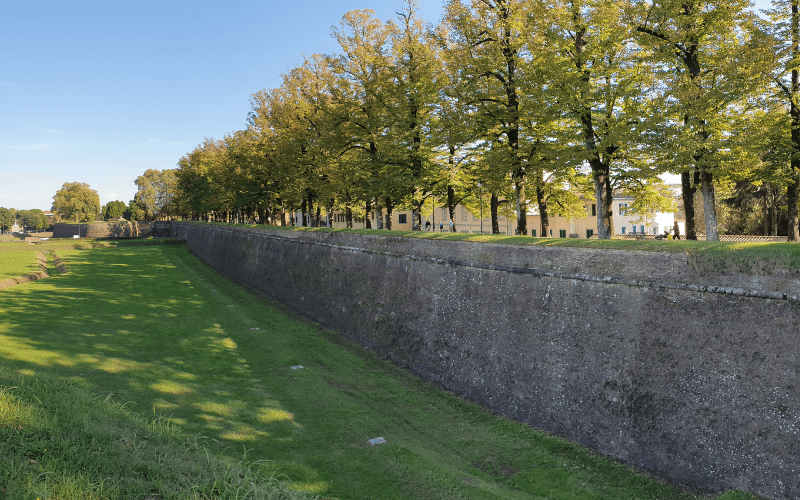
Yes! Lucca’s Renaissance walls are not just a historic monument but a beloved pedestrian promenade where visitors can walk, jog, or cycle whilst admiring the city’s rooftops. The whole city can be seen from this vantage point, offering a perfect mix of relaxation and breathtaking views. These city walls also offer access to hidden corners of the old town, where cobblestone streets lead to charming squares and ancient churches.
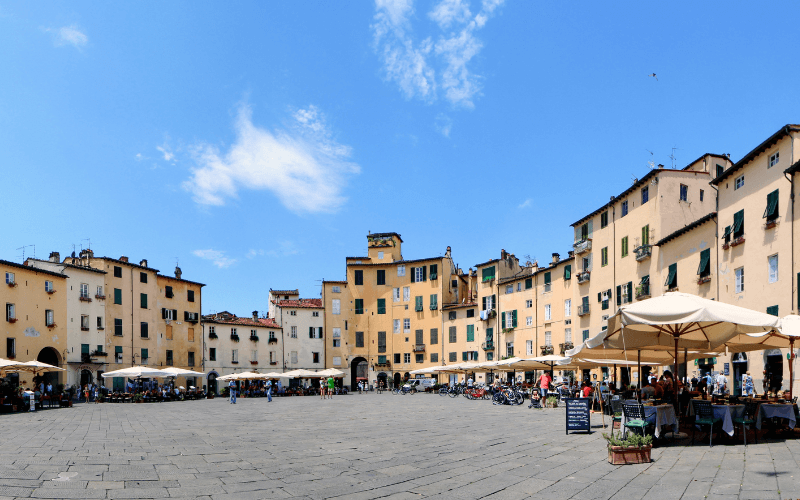
This truly iconic square, built on the remains of an ancient Roman amphitheatre, offers a unique elliptical shape lined with charming cafes and shops. It is a lively hub where visitors can soak in the historic ambience while enjoying a coffee or a delicious Italian meal. The preserved layout of this Roman amphitheatre whispers stories of its past grandeur and current uniqueness.
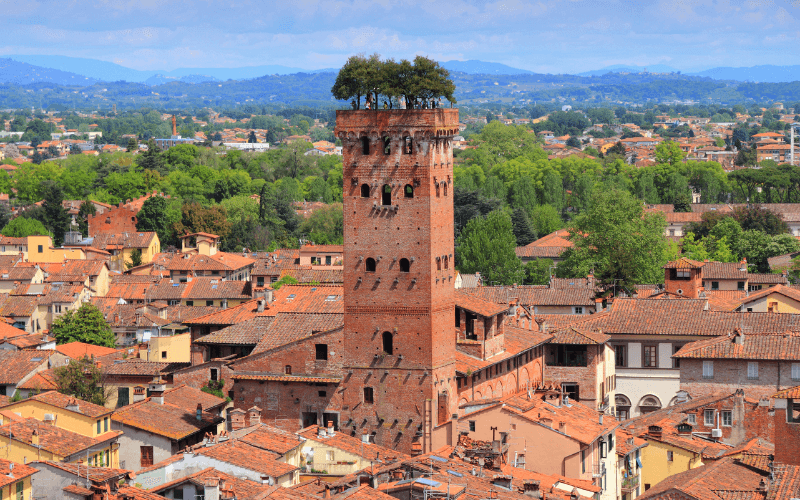
One of Lucca’s most distinctive landmarks, Torre Guinigi is a 14th-century tower-house that features a unique rooftop garden with centuries-old holm oak trees. Climbing to the top rewards visitors with a breathtaking panoramic view of the entire city and the surrounding Tuscany region.
Torre Guinigi is the most important tower in Lucca, featuring a hanging garden roof with seven holly oak trees. The trees planted on top will provide shade – and a very special and unexpected sight a tower. A true testament to Lucca’s mediaeval ingenuity, the city remains one of the few places in Italy where nature and architecture merge so seamlessly.
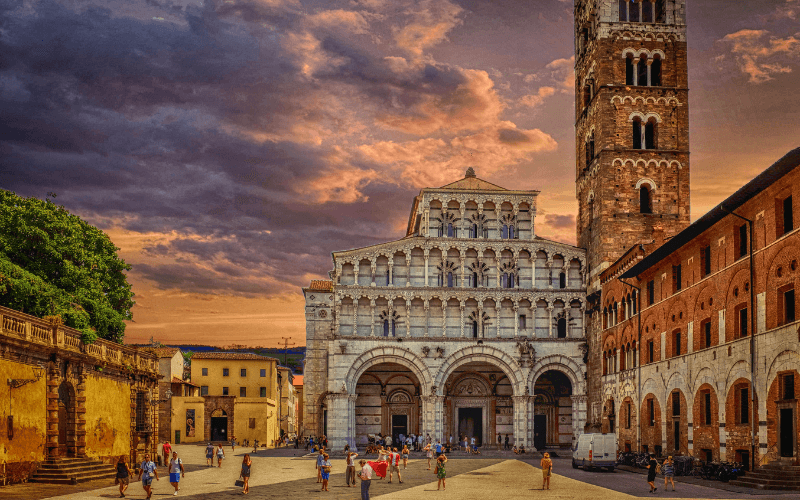
Lucca’s magnificent cathedral, Duomo di San Martino, showcases stunning Romanesque architecture and houses exceptional artworks, including the revered Volto Santo (Holy Face) crucifix. The intricate facade and impressive interiors make it a must-visit destination for history and art lovers. Its bell tower, an emblem of the city, adds to the grandeur of Lucca’s skyline.
The cathedral offers an extensive collection of religious artefacts, including intricate paintings, sculptures, and ancient manuscripts. It provides valuable insight into Lucca’s deep-rooted religious traditions and artistic excellence.
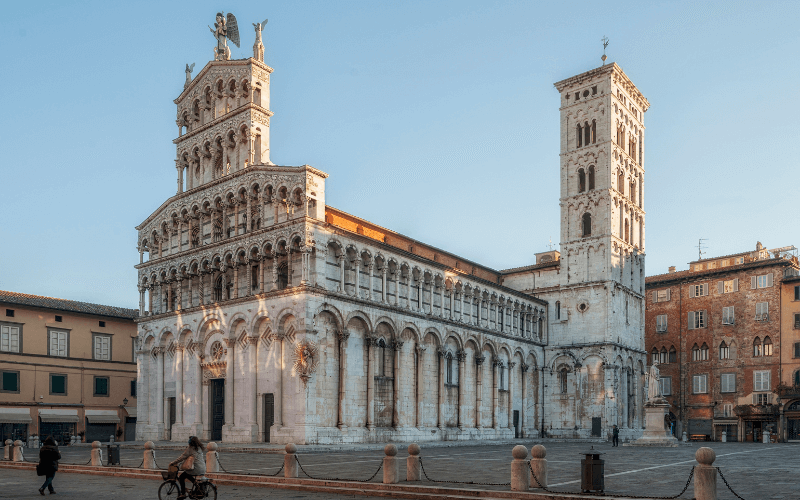
Located in the heart of the city, Chiesa di San Michele in Foro stands out with its elaborate white marble facade adorned with intricate carvings and statues. San Michele in Foro is built on the site of the original Roman forum and features a spectacular Pisan-Romanesque façade.
The church, dedicated to the Archangel Michael, is a fine example of mediaeval religious architecture in Tuscany. Piazza San Michele, where it stands, is surrounded by historic buildings, making it a must-see attraction for visitors exploring the city centre.
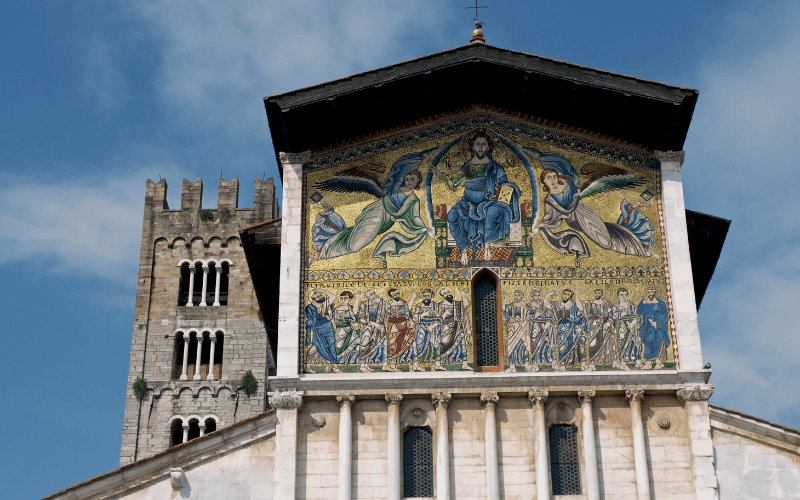
One of Lucca’s most striking churches, the Basilica di San Frediano stands out with its impressive golden mosaic facade depicting the Ascension of Christ. Dating back to the early Middle Ages, this historic basilica is one of the oldest churches in the city.
Inside, visitors can admire beautiful Romanesque architecture, frescoes, and the preserved relics of Saint Frediano. The basilica also features a stunning baptismal font with intricately carved biblical scenes, making it a must-visit for those interested in Lucca’s religious and artistic heritage.
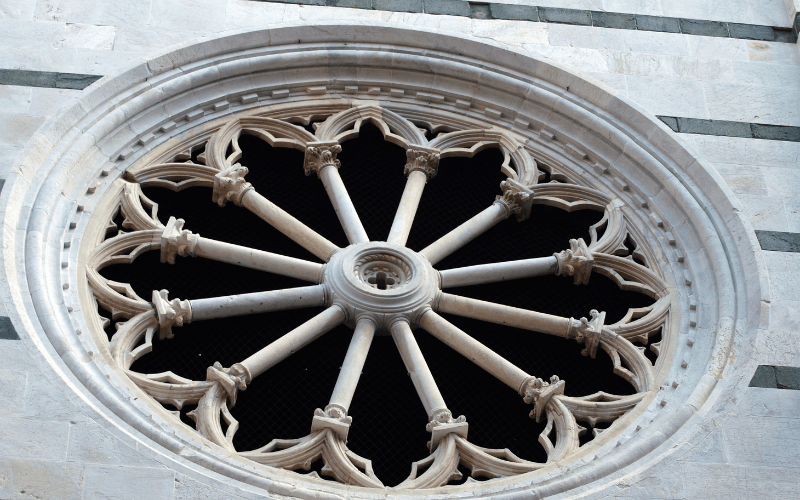
Lucca is often referred to as the City of 100 Churches, a testament to its rich religious heritage and stunning collection of sacred sites. There are definitely too many to cover them all in this article! We want to briefly mention some of them beyond what we have already mentioned, just to give you the opportunity to dive into it with a little research.
Another important church in the city, San Franceso, boasts a beautiful frescoed interior and is the final resting place of the famous Lucchese nobleman Castruccio Castracani.
For those interested in Baroque architecture, San Paolino stands out with its intricate altars and impressive artwork. Meanwhile, Santa Maria Forisportam, also known as “Santa Maria Bianca” due to its luminous marble façade, is a lesser-known but equally breathtaking religious site.
A visit to Lucca’s churches offers a journey through centuries of history, from early Christian influences to Renaissance masterpieces. Whether you’re an architecture enthusiast or a history lover, these sacred sites make Lucca a truly spiritual and cultural treasure.
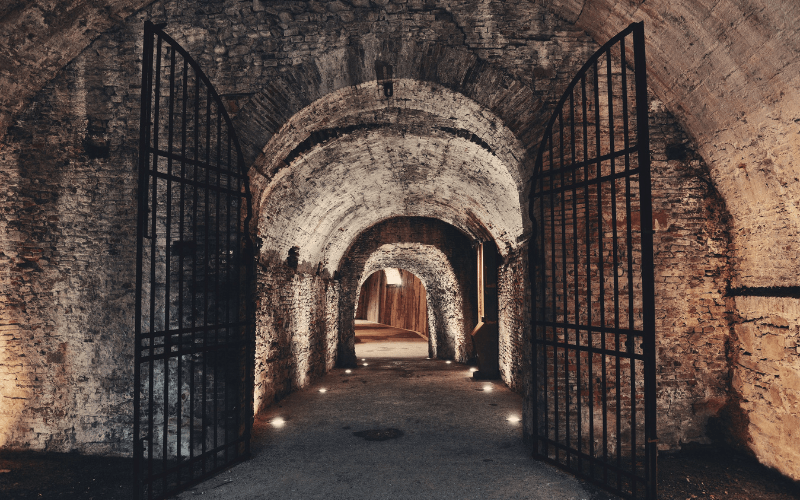
Hidden beneath the modern streets of Lucca, the Domus Romana offers a fascinating glimpse into the city’s Roman past. This archaeological site showcases the remains of an ancient Roman house, complete with intricate mosaics, pottery, and everyday objects that provide insight into life during the Roman Empire.
Visitors can explore the excavated ruins and learn about the evolution of Lucca from its early foundations through interactive displays and expert-led tours. The Domus Romana is a must-visit for history enthusiasts eager to connect with the city’s deep-rooted past.
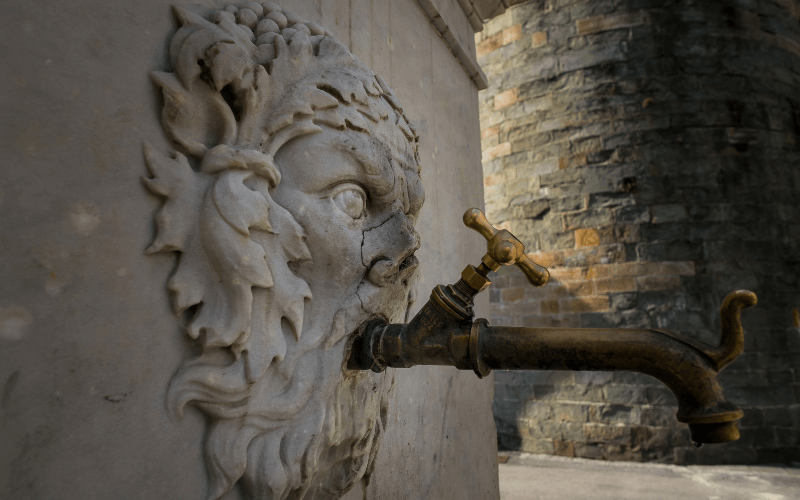
Housed in a beautiful Renaissance villa, this museum is a treasure trove of Venetian, Flemish, and Florentine masterpieces. The exhibition traces the history of the city: from the eighth century BC of the archaeological collection, to the paintings of the late eighteenth century. It provides a deep dive into Lucca’s artistic heritage, making it a fascinating stop for history and art enthusiasts.
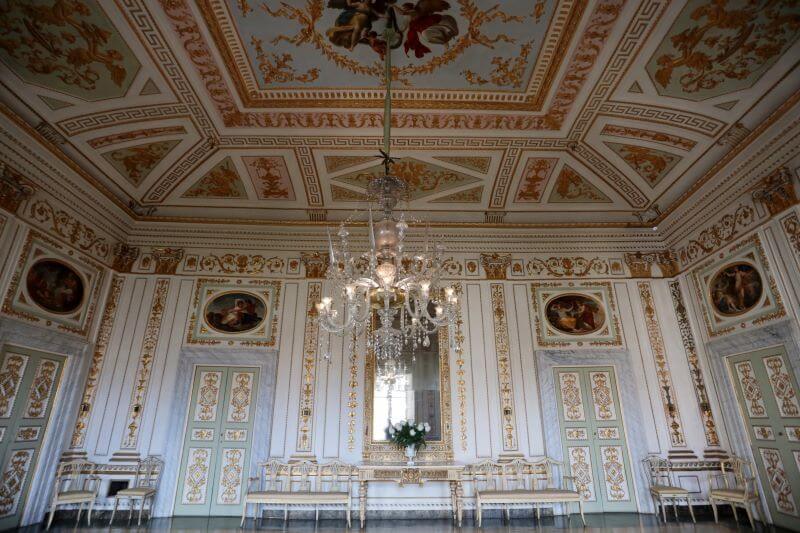
A former noble residence, Palazzo Mansi has been transformed into an exquisite art museum featuring a stunning collection of tapestries, period furniture, and grand frescoes. Its well-preserved interiors make visitors feel as though they have stepped back in time. As one of Lucca’s most elegant palaces, it embodies the luxury of the city’s noble families during the Renaissance.
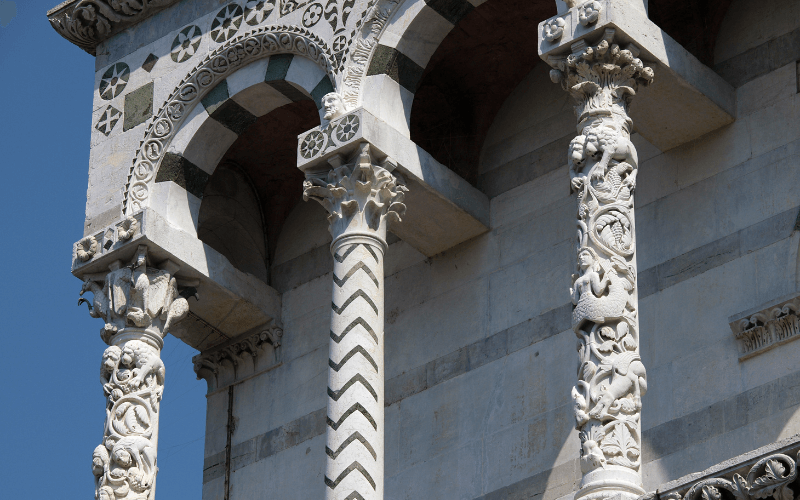
The Museum and Archaeological Complex of Santi Giovanni e Reparata preserves some of the most important traces of the history of Lucca, from the Roman era to the present day. The excavation and restoration campaign began in the late seventies, ending in the nineties with the transformation of the entire complex into a museum.
The archaeological area located in the foundations of the church and the Baptistery is one of the most important archaeological sites in the city, allowing you to travel from ancient Roman times to the Middle Ages.
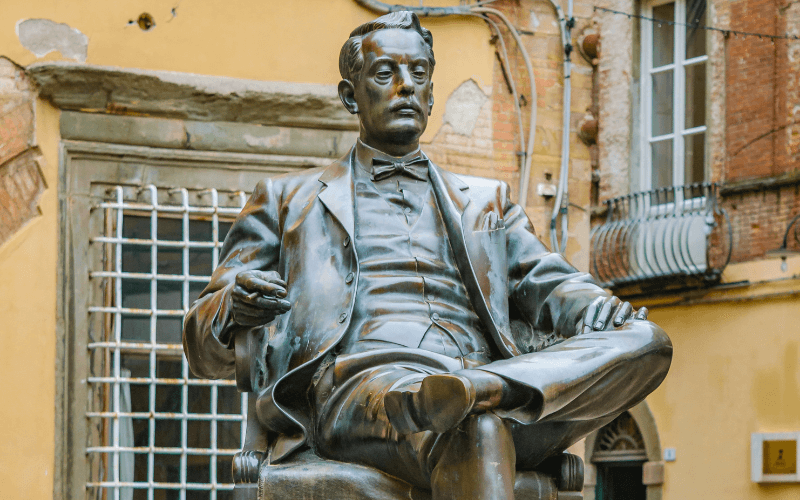
The Puccini Museum, located in the birthplace of the world-renowned opera composer Giacomo Puccini, is a must-visit for music lovers. This beautifully preserved home offers a glimpse into Puccini’s life, showcasing personal artefacts, original musical scores, and letters.
The museum provides insight into the composer’s creative process and his lasting impact on the world of opera. Visitors can walk through the very rooms where masterpieces like La Bohème and Madama Butterfly were conceived, making it a deeply immersive experience into Lucca’s rich musical heritage.
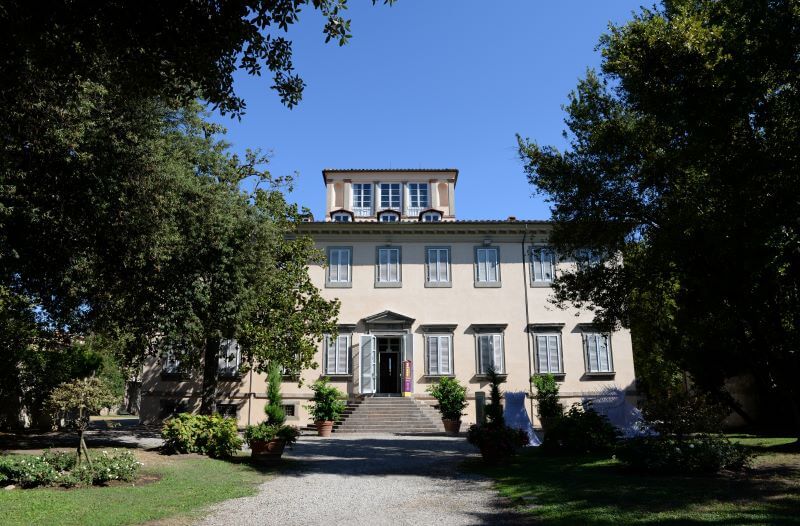
Villa Bottini, an exquisite Renaissance villa, is one of Lucca’s hidden treasures. Built in the 16th century, this elegant estate was once owned by the powerful Buonvisi family and later acquired by Elisa Bonaparte, Napoleon’s sister. The villa is renowned for its stunning frescoed interiors and expansive gardens, which provide a tranquil escape from the bustling city.
Today, Villa Bottini hosts cultural events, exhibitions, and festivals, making it a must-visit location for those interested in history and the arts.
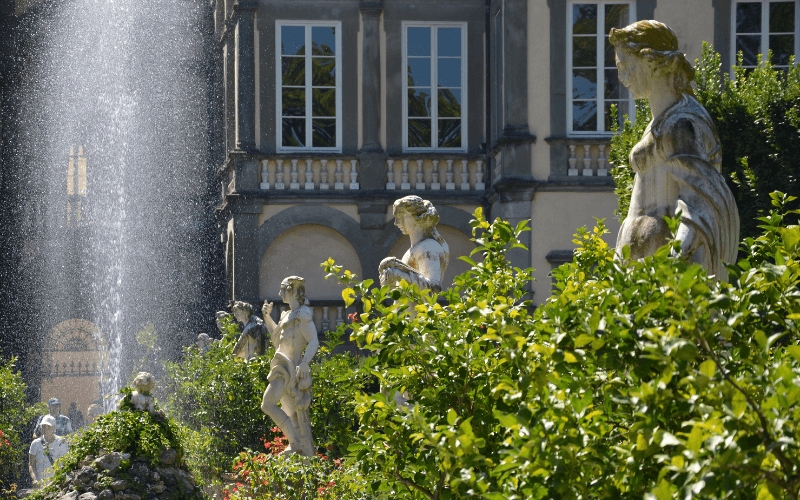
Famous for its beautifully manicured gardens, Palazzo Pfanner is an elegant 17th-century residence that offers a serene escape from the bustling city. The palace itself features Baroque-style frescoes and antique furnishings, making it a captivating visit. Visitors can walk through its ornate gardens, one of the few places in Lucca that reflect the artistic influences of the Baroque period.
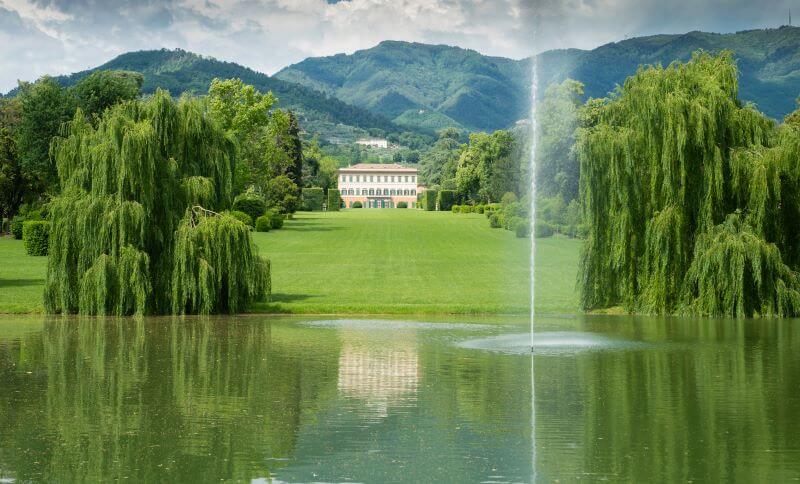
Nestled in the Lucca countryside, Villa Reale is an opulent retreat surrounded by picturesque gardens and serene landscapes. The villa has hosted royalty and artists, making it a place of historical and cultural significance. It is a perfect stop for those who want to experience the elegance of a bygone era in Central Italy.
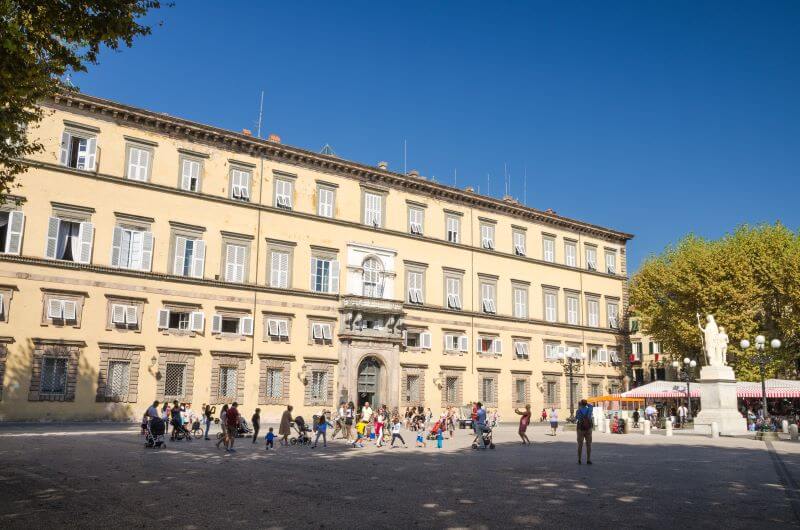
Once the residence of the powerful rulers of Lucca, Palazzo Ducale is a symbol of the city’s rich political and artistic heritage. Situated in Piazza Napoleone, this grand palace has been at the heart of Lucca’s governance for centuries.
The stunning façade, impressive courtyard, and lavish interiors reflect the city’s former status as an independent republic. Inside, visitors can admire elegant halls adorned with frescoes and historic artefacts that tell the story of Lucca’s political past. Palazzo Ducale remains one of the most important landmarks in the city, offering a glimpse into the aristocratic grandeur of Renaissance walls and beyond.
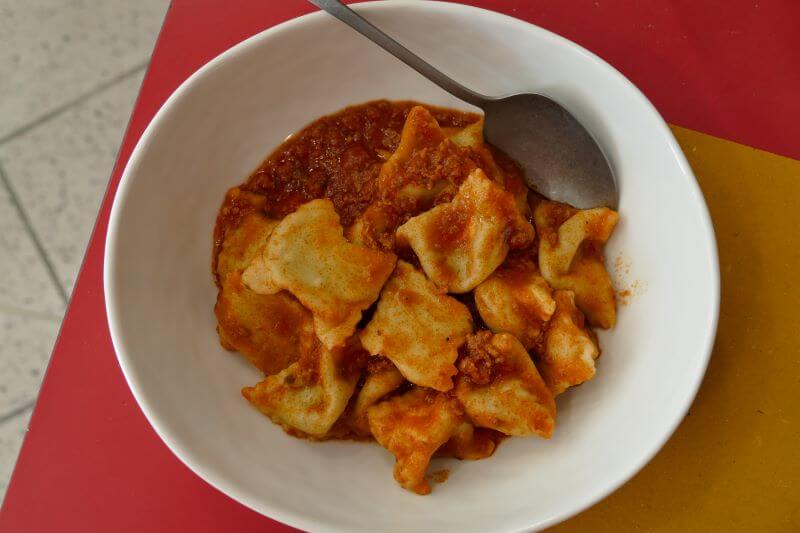
Lucca is a paradise for food lovers, offering an authentic taste of Tuscany’s simple cuisine, deeply rooted in tradition. The region is known for its use of fresh, locally-sourced ingredients, combining rustic flavours with refined techniques to create unforgettable dishes.
One of the most famous dishes in Lucca is tordelli lucchesi, a handmade pasta filled with seasoned meat and topped with a rich, slow-cooked ragù. Another staple is farro soup, a hearty dish made from ancient spelt grain, beans, and vegetables, which reflects the area’s mediaeval agricultural traditions. Buccellato, a sweet bread infused with anise and raisins, is a must-try treat, often enjoyed with coffee or Vin Santo.
Visitors should also indulge in cecina, a thin, savoury pancake made from chickpea flour, and biroldo, a traditional Tuscan blood sausage that has been enjoyed in the region for centuries. Wine lovers will appreciate the Montecarlo DOC wines, produced just outside the city, and the famous Vernaccia di San Gimignano white wine.
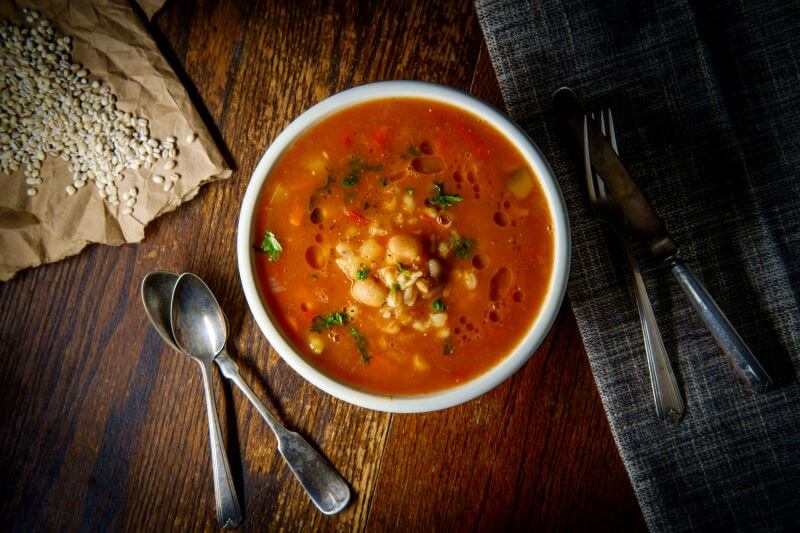
For an authentic dining experience, head to Trattoria Da Leo, a beloved family-run spot known for its cosy ambience and excellent tordelli. Osteria Baralla, set in a historic 19th-century building, offers a great selection of local wines alongside regional specialities. For a more elegant setting, Buca di Sant’Antonio serves up refined versions of Lucca’s traditional recipes in a historic restaurant dating back to the 18th century.
For street food and quick bites, visit Pizzeria da Felice, where locals line up for slices of cecina, or Forno a Vapore Amedeo Giusti, a historic bakery known for its fresh buccellato. To explore Tuscan wines and enjoy a tasting session, Fattoria di Fubbiano and Tenuta di Valgiano offer fantastic vineyard tours just outside the city.
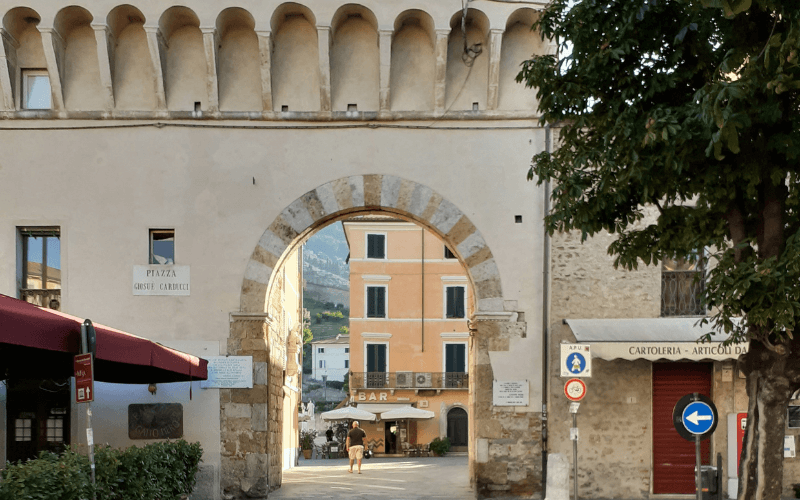
Lucca’s main shopping street, Via Fillungo, is lined with charming boutiques, artisan shops, and high-end stores. Strolling along this lively street provides visitors with an opportunity to pick up unique gifts and enjoy the city’s vibrant atmosphere. From traditional silk scarves to modern fashion, Via Fillungo is a great idea for travellers looking for authentic Italian shopping experiences.
Still, while shopping at Via Fillungo, you cannot escape the sights. Houses and palazzi here are developed mainly vertically, including Casa Barletti-Baroni, or the Church of San Cristoforo, a typical example of the influence of Pisan architecture on the Lucca area, with its austere façade, made of white marble and embellished with decorations, arches and columns.
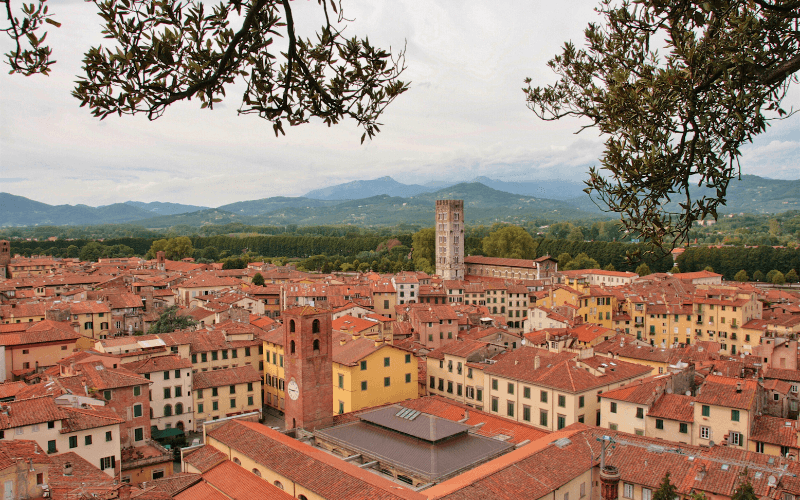
The bustling Lucca Market and San Gimignano Market offer a variety of local products, from fresh produce to handmade crafts. Visitors can find distinctive souvenirs such as silk scarves and finely embroidered linens, bringing a piece of Lucca’s artistry home with them. The markets are also a great spot to sample Lucca’s local specialties and fresh, locally-sourced ingredients.
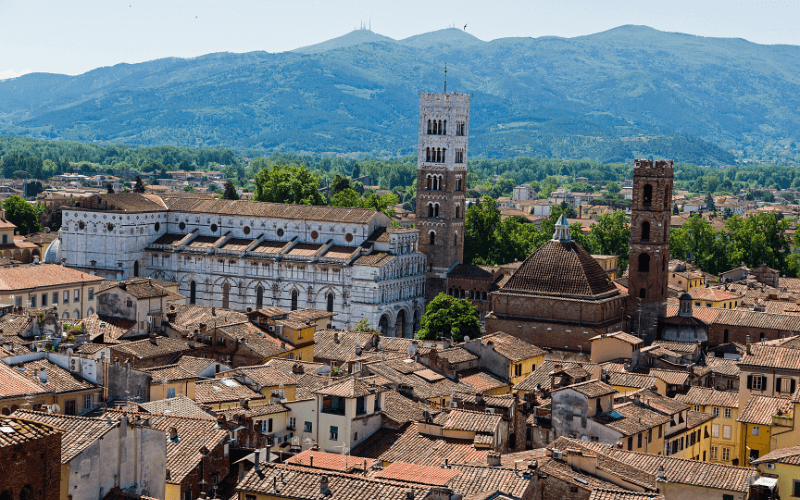
Lucca is a city that celebrates tradition and modern entertainment in equal measure. The Lucca Summer Festival is one of Italy’s most famous music events, featuring international artists and live performances in the stunning Piazza Napoleone.
Another major event is Lucca Comics & Games, drawing fans from all over the world. It is the largest comics festival in Europe, and the second biggest in the world after the Comiket, traditionally held at the end of October.
Visitors can also experience the vibrant Santa Croce Festival, a historic religious procession honouring Lucca’s sacred traditions. The events take place in mid-September and include the evocative Luminara di Santa Croce, held through the streets and squares of the historic centre, lit up with thousands of lights and candles, while people in mediaeval costume parade through and mix with the onlookers.
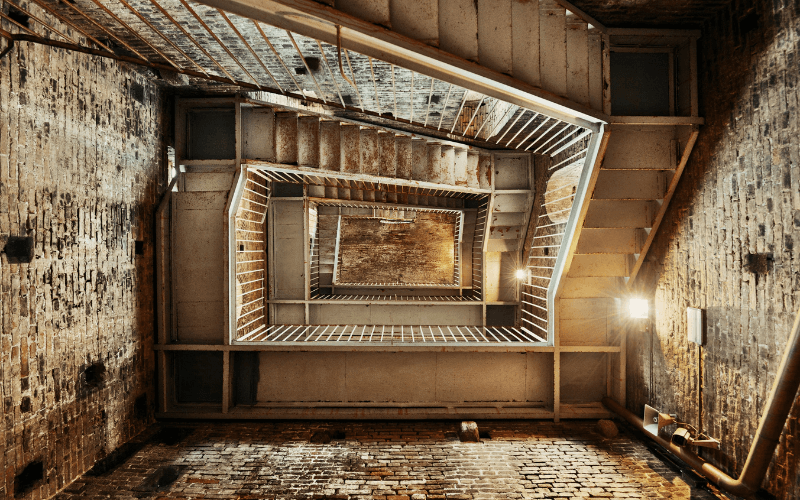
Beyond its famous landmarks, Lucca has a wealth of lesser-known spots worth exploring. The Clock Tower, one of the city’s tallest towers, offers an incredible panoramic view for those willing to climb its historic steps.
Another must-see is Volto Santo, an ancient wooden crucifix housed inside Lucca Cathedral (Duomo di San Martino), believed to date back to the early Middle Ages. Visitors should also seek out Porta Elisa, a neoclassical gate offering a unique entrance into the walled city.
Lucca is a pedestrian-friendly city, making it easy to explore on foot. If you travel by car, it’s advisable to park outside the walls of Lucca and walk into the city center for ease of access.
Public transportation, including buses and trams, provides additional convenience for visitors. ALso, cycling is a popular way to get around in Lucca due to its pedestrian-friendly layout.
The nearest airport is Pisa International Airport, located just 30 minutes away by car or taxi, ensuring easy access for travellers. The train ride from Pisa to Lucca takes only 25 minutes.
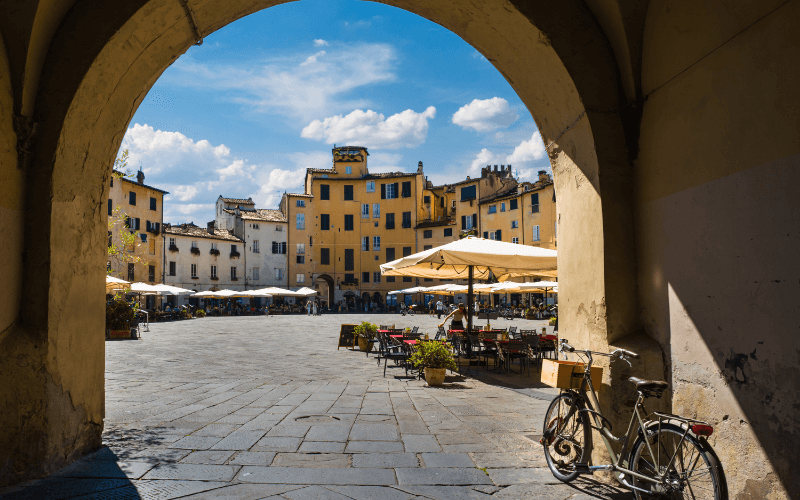
Lucca is a city that captivates the heart, blending history, culture, and exquisite cuisine into an unforgettable travel experience.
Lucca is a charming city that feels like stepping into a Tuscan fairytale. Whether you’re strolling through its ancient streets, marvelling at architectural wonders, or indulging in local flavours, Lucca offers a journey through time and beauty. With its enchanting ambience and diverse attractions, this Tuscan gem deserves a top spot on your Italy itinerary.
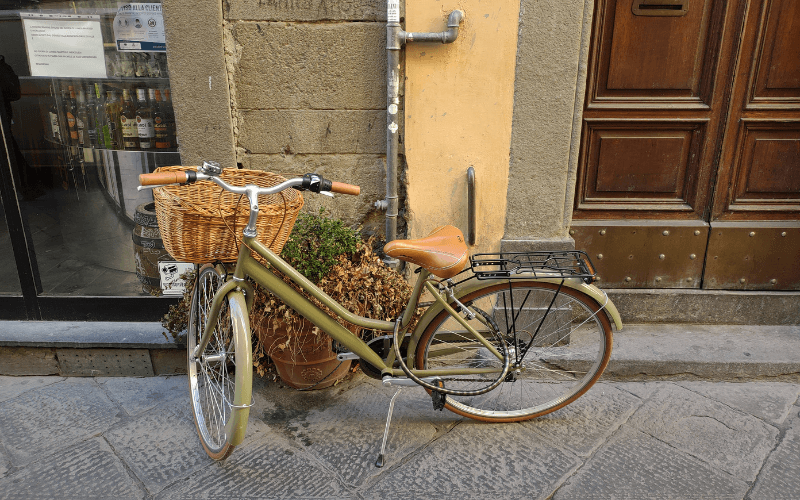
Lucca’s central location makes it a perfect base for exploring the wonders of Tuscany. Visitors can easily travel to some of Italy’s most famous destinations while enjoying Lucca’s relaxed atmosphere as a home base.
Pisa (30 minutes by train or car): Home to the world-famous Leaning Tower, Pisa is a must-visit for architecture lovers. The Piazza dei Miracoli also houses the stunning Duomo and Baptistery.
Florence (1 hour 20 minutes by train or car): The heart of the Renaissance, Florence boasts iconic landmarks like the Duomo, Uffizi Gallery, and Ponte Vecchio.
San Gimignano (1 hour 30 minutes by car): Known for its mediaeval towers and charming streets, San Gimignano is perfect for wine tasting and discovering Tuscany’s rural beauty.
Siena (2 hours by car): A UNESCO-listed city famous for its stunning Piazza del Campo and the Palio horse race, Siena is a must for history and culture lovers.
Cinque Terre (2 hours by train or car): Though not in Tuscany, the stunning coastal villages of Cinque Terre
